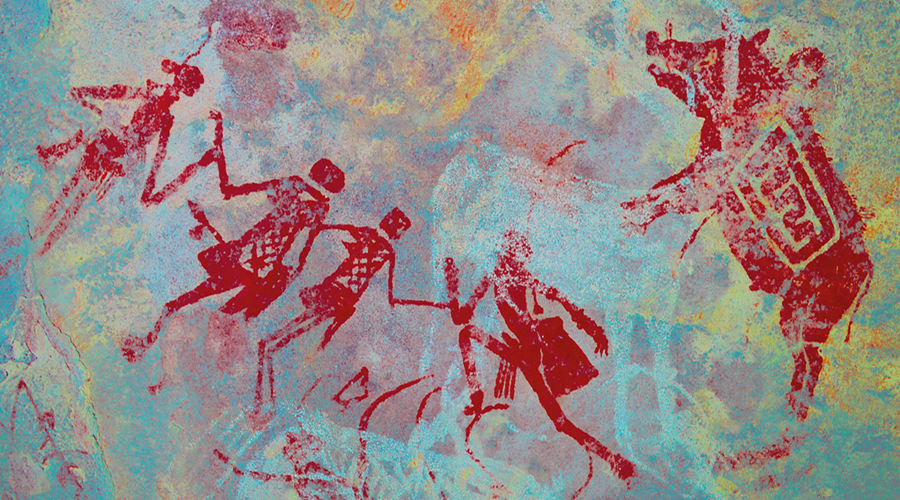



Much ancient rock art has survived the ravages of time only to face the peril of modern day vandalism. Shortly before Memorial Day in America, Utah became the site of one such instance. Vandals carved initials into a rock containing the Pregnant Buffalo, one of over 10,000 petroglyphs found Nine Mile Canyon Utah, that have survived for more than a thousand years.
It is an example of the risks to Humankind's cultural legacy being altered irrevocably, and present an ongoing challenge to ensure rock art remains preserved around the world.
Archaeologist Jerry Spangler who was at the Utah site said "It is not acceptable. These are treasures of the past that belong to all of us. A rock art panel is not someone's private pallet where people can create their own images."
Similar examples of unwanted vandalism have been recorded through out the world, indeed another panel at Nine Mile Canyon was damaged the year before, while similar graffiti has been left at the site as far back as 1867.
Strict rules put in place by The Bureau of Land Managment regarding visiting Native American sites state:
Leave Native American rock art, ruins, and artifacts untouched for the future. The oil from a single handprint can chemically affect rock art. Climbing on ruin walls can destroy, in a moment, a structure that has survived for a thousand years. Removing or even moving artifacts destroys the scientific value of sites. Chalking or wetting rock art is prohibited.
The vandalism at Nine Mile Canyon is a strong reminder for the need to educate in the preservation and protection of rock art for future generations.
by Bradshaw Foundation
Wednesday 23 July 2025
by Bradshaw Foundation
Thursday 29 May 2025
by Bradshaw Foundation
Monday 03 February 2025
by Bradshaw Foundation
Friday 09 August 2024
by Bradshaw Foundation
Wednesday 24 July 2024
by Bradshaw Foundation
Thursday 04 July 2024
by Bradshaw Foundation
Monday 01 July 2024
by Bradshaw Foundation
Wednesday 20 March 2024
by Bradshaw Foundation
Tuesday 13 February 2024
by Bradshaw Foundation
Tuesday 13 February 2024
by Bradshaw Foundation
Thursday 01 February 2024
by Bradshaw Foundation
Tuesday 28 November 2023
by Bradshaw Foundation
Thursday 23 November 2023
by Bradshaw Foundation
Monday 20 November 2023
by Bradshaw Foundation
Tuesday 31 October 2023
by Bradshaw Foundation
Thursday 26 October 2023
by Bradshaw Foundation
Wednesday 23 July 2025
by Bradshaw Foundation
Thursday 29 May 2025
by Bradshaw Foundation
Monday 03 February 2025
by Bradshaw Foundation
Friday 09 August 2024
by Bradshaw Foundation
Wednesday 24 July 2024
by Bradshaw Foundation
Thursday 04 July 2024
by Bradshaw Foundation
Monday 01 July 2024
by Bradshaw Foundation
Wednesday 20 March 2024
by Bradshaw Foundation
Tuesday 13 February 2024
by Bradshaw Foundation
Tuesday 13 February 2024
by Bradshaw Foundation
Thursday 01 February 2024
by Bradshaw Foundation
Tuesday 28 November 2023
by Bradshaw Foundation
Thursday 23 November 2023
by Bradshaw Foundation
Monday 20 November 2023
by Bradshaw Foundation
Tuesday 31 October 2023
by Bradshaw Foundation
Thursday 26 October 2023
Friend of the Foundation











